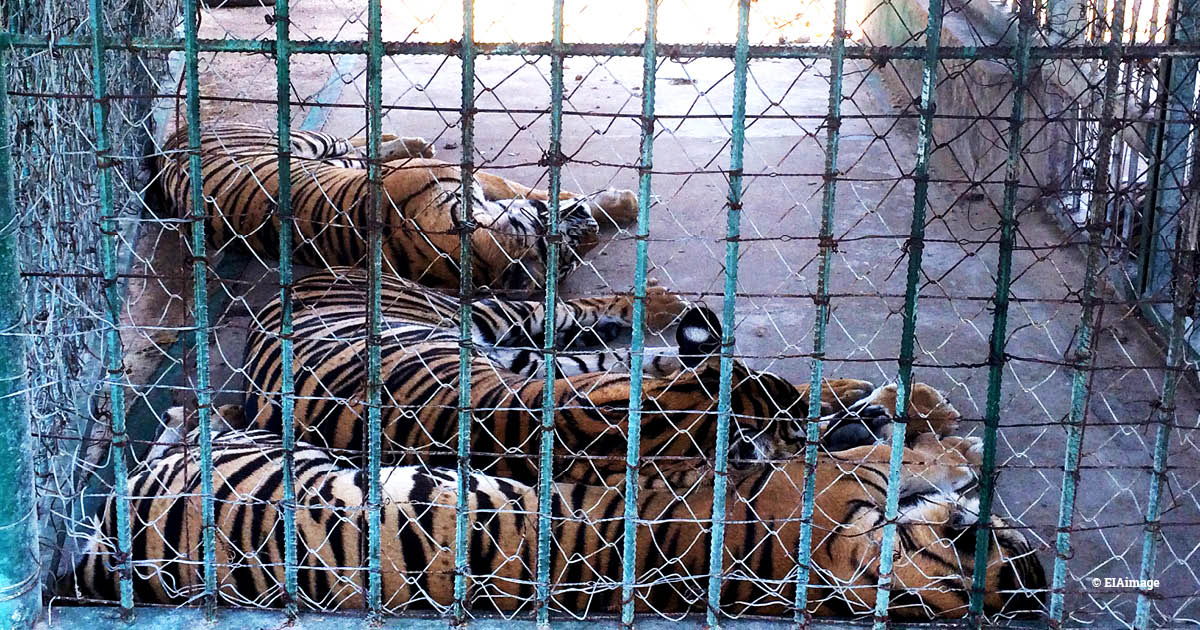China’s aim to be a wildlife conservation leader undermined by its exploitation of endangered species



To use or not to use? That’s the question when it comes to wildlife protection policies.
Many countries still hold the view that wildlife is just another natural resource to be extracted and profited from. This view can present risks, however, not only to the survival of some species, but to humanity. The COVID-19 pandemic brought into sharp focus what happens when we ignore the One Health principle.
On 30 December 2022, almost two years since the initial announcement that the Chinese Government would revise its Wildlife Protection Law (WPL) in the wake of the pandemic, the brooding is finally over and the National People’s Congress of the People’s Republic of China published the amended law in its final form.
Unfortunately, the lamentable answer was a significant return to an emphasis on “utilisation” in the overarching principles of the Law, which now reads that the State “encourages and supports the scientific research and utilisation of wild animals”.

Captive tigers, China (c) EIA
The Government of China has implemented some important and positive measures for wildlife conservation. It brought the giant panda back from the brink of extinction, enforces a comprehensive ivory ban and works with other countries to seize tonnes of illegal wildlife goods and bring down trafficking networks. In December last year, China chaired the 15th Conference of Parties to the UN Convention on Biological Diversity and saw through the agreement on an historic set of goals and targets to better protect the world’s wildlife and habitats.
Throughout the newly amended WPL, we see the political will in China to step up its efforts to safeguard biodiversity and One Health. There are a number of positive changes; for example, the State will:

Pangolin products found on sale in China
Regrettably, in what seems as a parallel agenda going in the opposite direction, we also see a successive increase in the endorsement of captive breeding and utilisation of wildlife from the first revision draft to the adopted amendment.
EIA has repeatedly voiced its concerns about the commercial use of even the most protected species in China, especially for ornamental and medicinal purposes, and about captive breeding to supply this market.
We are concerned that the amendment continues to support the captive breeding and utilisation of endangered species, even those under the highest level of protection. The exemptions in the WPL before the revision remain firmly in place, allowing endangered animals such as tigers, leopards and pangolins to be bred, traded and utilised for scientific research, captive breeding, public exhibition and shows, cultural relics protection or other undefined special circumstances and medicine.
The demand for parts and derivatives of pangolins and Asian big cats such as tigers, leopards and snow leopards is one of the main drivers of the decline of these species in the wild.
Where wild tigers have made slight recoveries, it has been in countries such as India and Nepal, which do not allow commercial utilisation of their parts and derivatives. Yet these populations continue to be threatened by poaching and illegal trade, with China being the primary destination country for their parts and derivatives.
The international community, via the Convention on International Trade in Endangered Species of Wild Fauna and Flora (CITES), has conveyed its concern on the matter by recommending the closure of legal domestic markets that contribute towards the poaching and trade of Asian big cats and pangolins, and specifically recommending that tigers should not be bred for trade in their parts and derivatives. These recommendations have not been implemented in the revised WPL.

Leopard bone TCM product (c) EIA
The revision of the WPL introduced a new phrase that the captive breeding of wild animals will be managed by categorisation, but no details of how this will be implemented have been released.
The Law also allows captive-bred populations to be exempted from the level of protection granted to the species, opening up opportunities for the commercial use of these animals under a permit and special marking system with questionable effectiveness.
It further provides for wild species to be categorised as livestock, with no safeguard that even the species with the highest level of protection will be exempt. The lack of a clear definition in the Law for key terms such as “utilisation”, coupled with the exemption for “other special circumstances”, provide scope for species with the highest level of protection to be potentially bred and utilised for any possible purpose.
Ambiguity and an alarming lack of clear definitions is another glaring pitfall the amendment has failed to address. Although the amendment has adopted a broadened food ban to cover all terrestrial wild animals under some form of protection, it does not clarify if the ban applies to captive-bred populations of protected species, nor does it explain what counts as “food”. Culturally there is no clear division between food and traditional Chinese medicine – products such as tiger bone wine are usually marketed as a health supplement, not a medicine or food, so what is the exact implication of this ban?
Another increased ambiguity this amendment brings is in the protection offered to animals which are not native to China. The Law currently stipulates that the list of wild animals under the strictest CITES protection (Appendix I) would be managed as species under special state protection, the highest level of protection in China, subject to review and approval by the Department of Wildlife Protection and Management under the State Council.
The amended WPL merely states that such species would be managed, subject to review and approval mentioned, according to the relevant regulations but without clearly appointing a protection level. Thus, the security provided to highly trafficked species such as African pangolins, rhinos, saiga and others has become more uncertain.

Pangolins – the world’s most-trafficked mammal and a popular ingredient in TCM
The Chinese Government’s obstinate support of captive breeding and utilisation of even the most endangered and trafficked wildlife strongly undermines its determination and efforts to protect biodiversity and to be a global front-runner in conservation.
We had hoped that 2022 would bring better advances for tigers and many other highly endangered species and that China’s WPL amendment would show the much-needed abolition of captive breeding and utilisation of vulnerable wild animals for commercial purposes.
But as the Year of the Tiger nears its end, we are sad to see that the opportunity has yet again been missed.